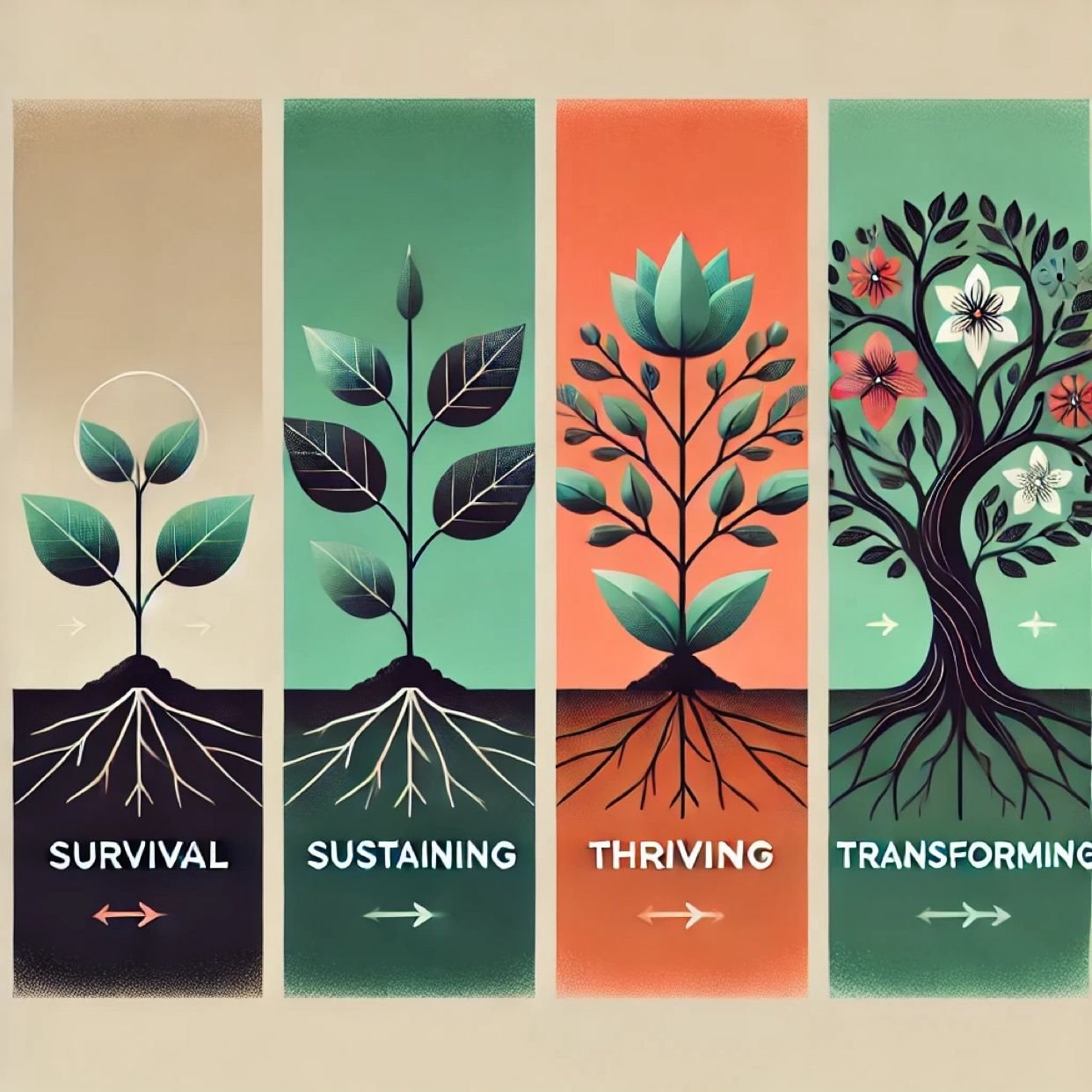The Stages of Organizational Change
Navigating organizational change requires empathy, authenticity, and cultural sensitivity. From my experience, I see four distinct stages: survival, sustaining, thriving, and transforming. Often, there’s a desire to leap directly from survival to transformation—but transformation demands a profound shift in mindset, which requires both time and commitment. Organizations that ignore the need for gradual progress often miss the opportunity to embed sustainable change.
1) In the survival stage, leaders focus on stabilizing operations, often under intense pressure. Here, empathetic leadership is crucial to building trust, particularly when employees are vulnerable and may feel disconnected. Leaders like Satya Nadella at Microsoft exemplify this approach—he introduced a "growth mindset" philosophy that emphasized learning and empathy to stabilize a company culture in need of revitalization.
2) In sustaining, organizations seek to embed stability and develop a consistent operational rhythm. Authenticity plays a central role here, as employees look to leadership for consistency and reliability. An example comes from Patagonia, where commitment to environmental values helps maintain a grounded, sustaining culture. Leaders are transparent about challenges, which fosters alignment and motivation.
3) Thriving marks the point where organizations are ready to innovate and grow. This stage requires leaders to foster cultural sensitivity, ensuring that the evolving organization respects and integrates diverse perspectives. My work with global brands has shown me how important it is to engage teams across different regions. For example, during my time at K11 Concepts, we balanced innovative, cross-cultural projects by embedding local perspectives, ensuring that changes resonated with both the organization and its diverse customer base.
4) Finally, transforming demands a leap in vision. However, transformation built solely on strategy, without a foundation in empathy and authenticity, risks being unsustainable. True transformation is a cultural journey. At IBM, Ginni Rometty’s focus on upskilling and reskilling employees showcased a commitment to transformation through cultural investment, not just technological advancement.
Many organizations want rapid results, but rushing from survival to transformation overlooks the importance of these intermediary stages. For change to be sustainable, leaders must allow the time needed for culture to adapt and evolve. How are you approaching these stages in your organization? Are there particular challenges you face when moving from one stage to the next?

